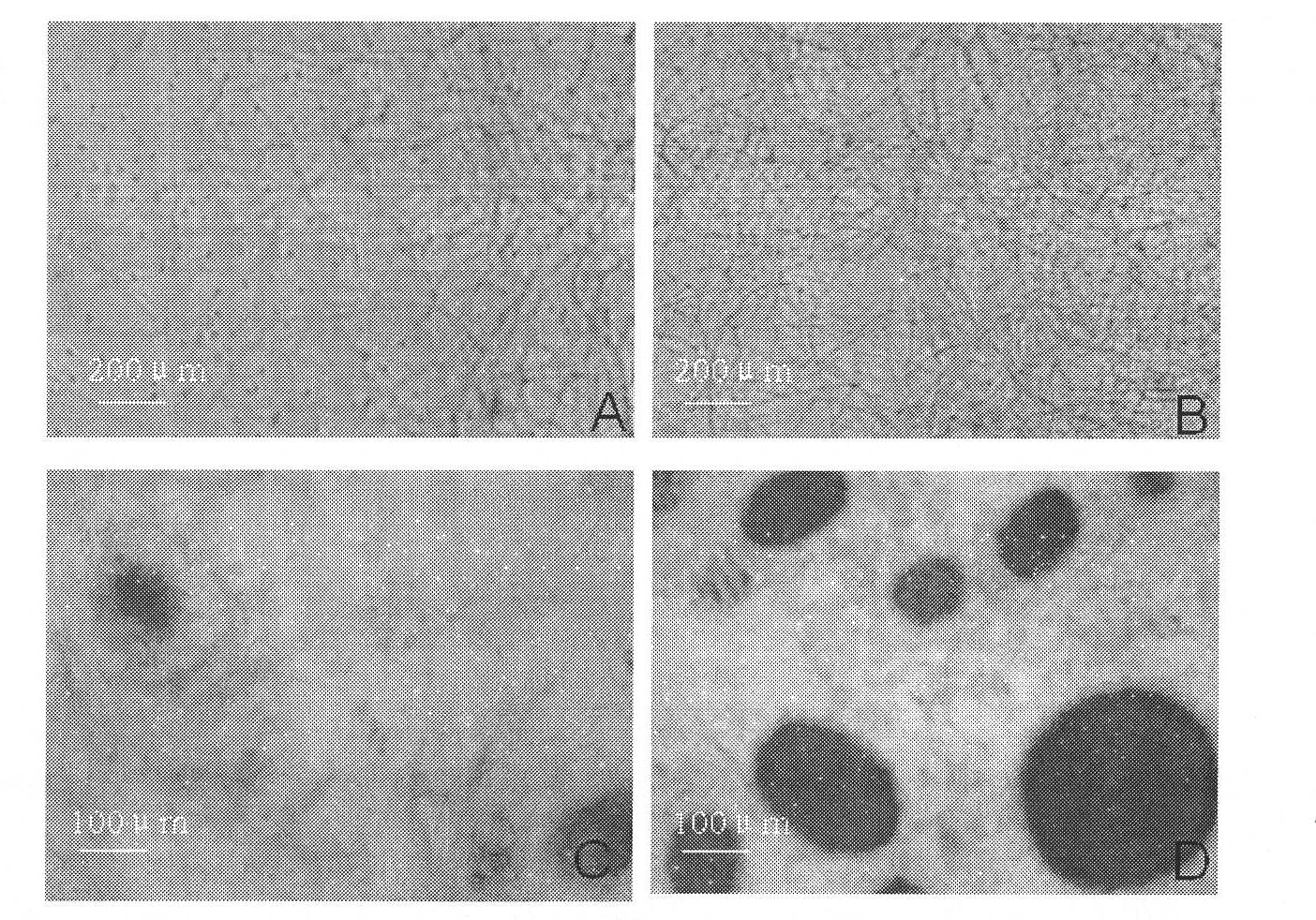Culture method of sclerotium of beauveria bassiana and application thereof
A technology of Beauveria bassiana and its culture method, which is applied to the cultivation of entomogenous fungus sclerotia and the application field of pest control, can solve the problems of no pathogenic fungus-Beauveria bassiana MS culture and application reports, and achieve low cost , simple process and broad application prospects
- Summary
- Abstract
- Description
- Claims
- Application Information
AI Technical Summary
Problems solved by technology
Method used
Image
Examples
Embodiment 1
[0022] The cultivation of embodiment 1 Beauveria bassiana sclerotia:
[0023] 1. Training method:
[0024] 1.1 Primary plate culture
[0025]Beauveria bassiana strains were grown on PDA medium at room temperature (~22°C) for 3 weeks. Cut sporulated agar plates to 1mm 2 Agar blocks were submerged in 10% glycerol and stored at -80°C.
[0026] 1.2 Preparation of spore suspension
[0027] For liquid culture, inoculate frozen stored agar blocks on PDA plates and culture at room temperature (~22°C) for 2 to 3 weeks. Add sterile water containing 0.1% polyethylene glycol oleic acid-based compound (Tween-80, Sigma), and aseptically disperse, mix and dilute to make a final concentration of 1.0×10 9 L -1 The spore suspension was used for later use.
[0028] 1.3 Sclerotia in liquid culture
[0029] In a 250mL beaker, put 100mL of culture solution into the spore suspension to make the final concentration of spores reach 5×10 6 L -1 , placed on a constant temperature shaker (tempe...
Embodiment 2
[0045] Embodiment 2 bioassay test:
[0046] 1. Detection of bioassay efficiency:
[0047] Breeding of Thrips biflora: Put 3 to 4 bean pods in a 0.5L cylindrical glass container, transfer adult thrips into the container to lay eggs, place the container in a growth box, and set the culture conditions at a temperature of 26°C. The relative humidity is 60%-70%, the photoperiod is L:D=13:11, and the adults are removed after 12 hours of oviposition to ensure that the larval ages are consistent. After 8 days, the 2nd instar and 2d larvae (L2) were collected for use.
[0048] Mix vermiculite, clay loam and nutrient soil in a ratio of 2:1:1. Add MS-DE particles evenly into the mixed soil, the mixing ratio is 100μg / 100g soil. Put the above mixture into a plastic flower pot, and spray ion-free water evenly until water seeps out from the bottom of the pot. Place the pots in plastic trays and add water frequently to keep the trays constantly filled with water that can be siphoned into ...
PUM
| Property | Measurement | Unit |
|---|---|---|
| diameter | aaaaa | aaaaa |
Abstract
Description
Claims
Application Information
 Login to View More
Login to View More - R&D
- Intellectual Property
- Life Sciences
- Materials
- Tech Scout
- Unparalleled Data Quality
- Higher Quality Content
- 60% Fewer Hallucinations
Browse by: Latest US Patents, China's latest patents, Technical Efficacy Thesaurus, Application Domain, Technology Topic, Popular Technical Reports.
© 2025 PatSnap. All rights reserved.Legal|Privacy policy|Modern Slavery Act Transparency Statement|Sitemap|About US| Contact US: help@patsnap.com



